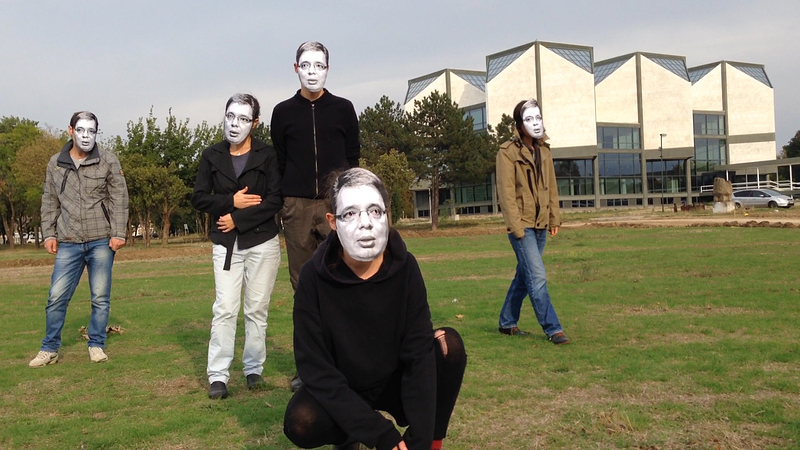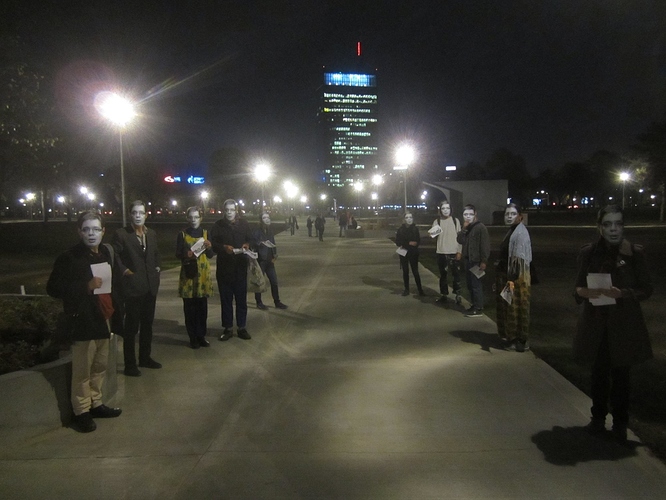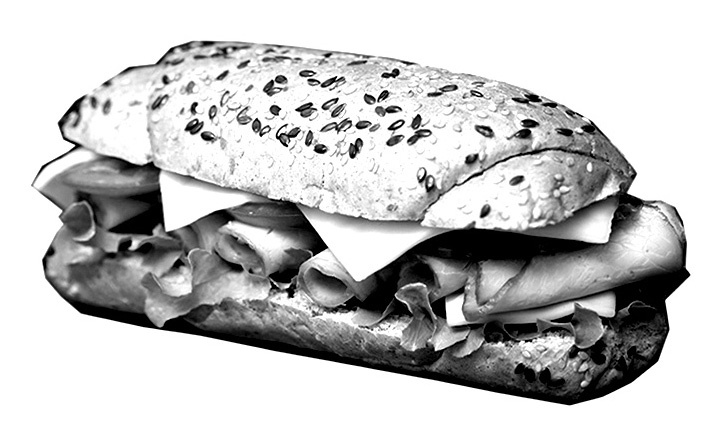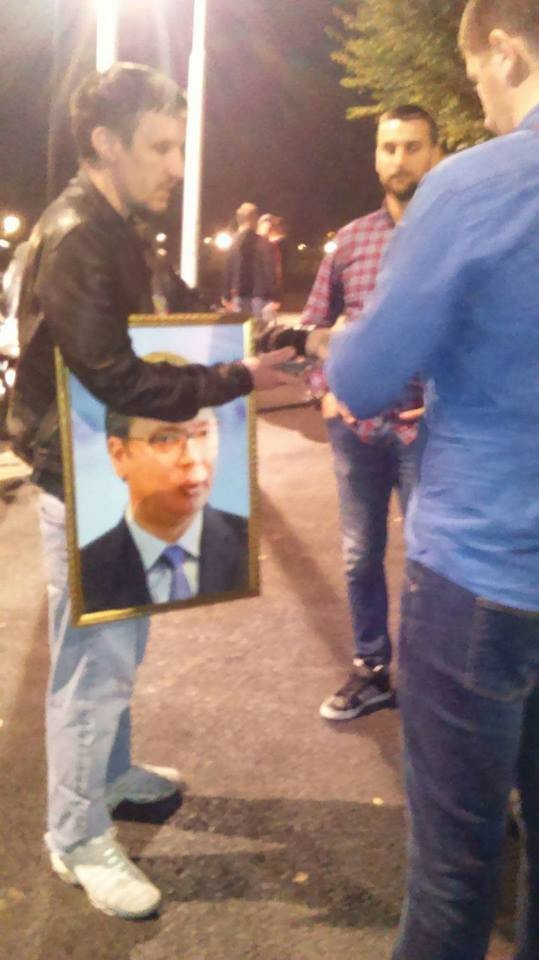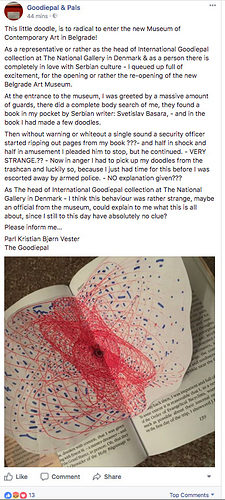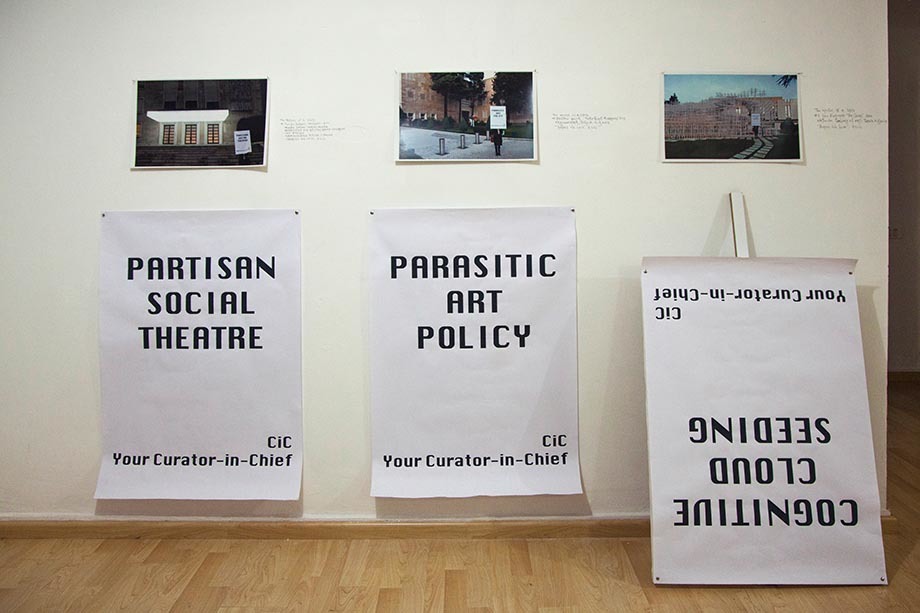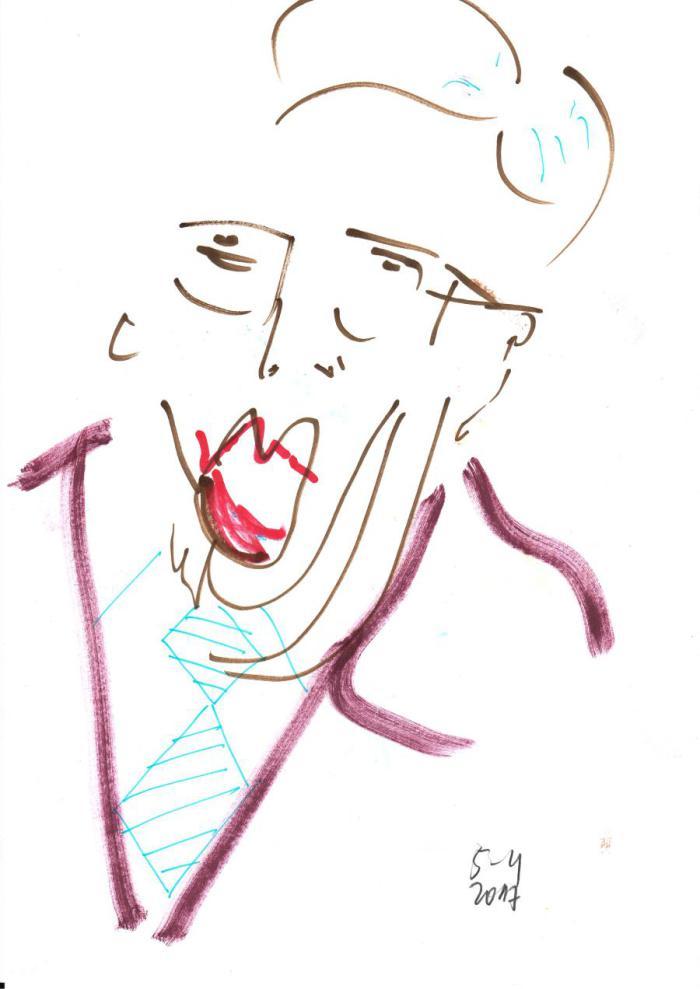Why the incidents at the MUSB in Serbia, cannot be internationally ignored.
The Museum Of Contemporary Art in Belgrade (MSUB), Serbia, opened its doors on the October 20th 2017 after being contentiously closed for more than a decade. Supposedly to carry out a progressive delayed upgrade that had turned into an interminable renovation process. Almost a decade long excuses of construction problems, contractual difficulties and mismanagement, caused the institution to be disconnected and intentionally detached from the cultural discourse in Serbia. Historically this museum has been blemished and plagued by controversies and scandals. The opening was not an exception in this. Announced to be open for 7 days and 24 hours non-stop could even though be regarded as a populist move, but not really a bad concept. However, issues with a private security firm, who were instructed to thoroughly check intrusively visitors at the entrance resulted in offensive examinations of visitor bags and controls of each and everyone, not unlike protocols as they are used at airports. Harassments and occasionally violations, caused some really embarrassing situations. People with empty papers, sketchbooks and drawings, were targeted in particular and were told that “political connotations cannot enter the museum”. Sketches were ripped out of sketchbooks, drawings were confiscated and discarded in big trash bins at the entrance. On the first day of the opening, two independent performances had been done, which caused the detainment of Vladan Jeremic and Uros Jovanovic on questionable grounds. An official statement by the museum took more than a week to be released, and complied with the museum’s history of controversy and mismanagement.
It would be naïve and ill-informed to denounce either the art performances by the Unbribables or by independent artist, Uros Jovanovic, at the opening of the MSUB (Museum of Contemporary Art Belgrade) as un-civilized. As acting substitute director of MSUB, Mr. Slobodan Nakarada clearly states: “that such kinds of art, exceeds certain limits of civilized norms”. An obvious and targeted demonization which in assumption discloses intentionally concealed structures of power and interests, leading directly to presume similarities with official media messages and how they are usually being disseminated by the current ruling government of Serbia, through their increasingly controlled media outlets. Provoking often to question the content as clearly constructed, fabricated or even imagined. Although Mr. Nakarada clearly mentioned the action of artist Uros Jovanovic in specific, as uncivilized, a solidarity between the Unbribables’ and Uros Jovanovic’s performance should be taken as equal position, as it would be intrinsically incorrect to threat these actions with different standards or norms. Both were clearly communicating a message through artistic expression.
Hence marking the artists of the Unbribables and Uros Jovanovic, into uncivilized opponents is just one way of suppressing their voices and thereby clearly intentionally disregarding and evading the questions this performance is raising. Instead of accepting the performance to trigger a cultural dialogue, it has been immediately buried as an act, utterly inconspicuously, and not worth to address any thoughts to. Brandishing the event as such, might provide the false hope of diminishing the confrontational message behind the performance, but also eliminates the possibility to open up a discourse abut the content of this performance, as it was correctly highlighted by the Association Independent Cultural Scene of Serbia (NKSS) as a typical case of censorship. Transparency, as it has been claimed by the EU as an important tool against corruption seems in this case intentionally being obfuscated and can be interpreted as indexical of the practice to conceal issues which are at least inconvenient to some political actors and their hidden agendas.
Who is providing the given statements really? The acting museum director, Mr. Nakarada, the curators Mr. Eric or Mr. Sretenovic. Their somehow contradictory statements indicates a larger problem, obvious personal interests, fear and official instructions how to publicly communicate this issue. Why their official statement about this issue has taken so long to be formulated? A subtle spin on the whole incident to safeguard each position in relation to the Museum, and its obvious links to a government that works overtime to construct an image in the media, locally and internationally. The statement from Mr. Nakarada, did not even attempt to address the events as they really took place. Blatant untruths were officially stated, while gradually, independent witnesses (visitors of the MSUB who experienced violations at first hand themselves of questionable policies as they were executed at the premises of the museum) are publishing their experiences, providing quite a different take on the events as they really happened. This has given extra weight when the rude entrance policies violated the Danish curator Parl Kristian Bjørn Vester, which provided a detailed report on his Facebook page of his harassment.
Mr. Nakarada obviously underestimated the power of social media, and in a previous era could get easily away with these constructed statements. However in this period where media is more direct, extremely fast and transparent, issues cannot stay concealed for very long. Vladan Jeremic was detained at the entrance of the museum, which Mr. Nakarda denies, as he mentioned that the artist which was detained was outside the territory of the museum. The more information is appearing differently, than was communicated through the official statement, the more Mr. Nakarada’s position as director of the museum is in question, which conveniently will end in approximately two months from now. Thus Mr. Nakarada can easily defend a story which does not convey the reality as it happened, and can conveniently disappear in oblivion taking with him, his deceitful media spin, leaving the museum unharmed and purged of any blame. A Coincidence?
As a reminder, the demonstration of 2015 at the premises of the museum was a criticism of why the museum had been closed for so long and how mismanagement has caused so many delays and disruption in its recent existence. The defenseless citizens were confronted by an armed police cordon. Was this a prelude of something which seemingly is becoming the norm today, with one simple but significant difference, that private security companies are now employed to execute similar functions as the police did before. Who owns those security firms and who controls them would provide an interesting insight in this story?
Pressuring artists by firstly detaining them and secondly by obfuscating, who in person, was responsible for this ordeal, thereby subsequent evading public criticism, raises an array of urgent questions. Authorization of private security companies instructed of autonomously dealing with legal issues as they should have been executed by police only, emphasizes problematic conflict of interest and responsibilities. It is an interesting legal issue which surely might be difficult to justify by an aspirant member of the EU. Are cardboard masks, sketchbooks with sketches, and black and white copies depicting sandwiches really threatening and impacting the safety of visitors of the museum and its premises? Why did the official statement, attempted to indirectly connect the alluded confiscation of some knifes, scalpels and a screwdriver, to the artists who had nothing to do with these objects. This is clearly another form of demonization and false justification to emphasize on safety and protection from theses ostensibly dangerous artists and their purportedly noxious action. However the performances were non-violent and well perceived and appreciated by the visitors who were confronted with it and were clearly understood as a friendly artistic expression. It shows clearly that the danger was considered in the ideas which were communicated by the artists, rather than real imminent treats they could have on the wellbeing of the visitors. The threat was pure conceptual in the form of criticism about how corruption, instrumentation of an important institution of contemporary art for political propaganda purposes, formed the foundation of the opening of the MSUB and the links with the ruling elites. Even though highly suggestive and metaphorical, the performance was intended merely like an invitation for cultural and societal dialogue, using media, which intensely focused for the last years, attention on these issues. The official reactions, however somehow provided the impressions that the content of the performance was not without truth. Claiming that the performances were insulting the president of Serbia as a reason to detain first Vladan Jeremic, while he only claimed responsibility to protect participating persons of the performance and visitors of the museum, who were carrying performance props into the museum, is a very strong and hyperbolic reaction. Hereby indicating a recognition that what was innocently communicated, perhaps, showed something so revealing and thus harmed the public imago that was for so long carefully constructed. Would a tolerant attitude allowing the performance to happen without intervention, generate the same media attention is unlikely. The exaggerated reaction of the authorities thus provided the ammunition to backlash and thus place attention on their own actions as questionable and suspicious. Could we assume by this that it merely unveils the tip of the iceberg and that what has been hidden requires all efforts to be kept in secrecy? Or in reversal, what does the government, through their smoke screen of confused responsibilities really try to hide? Is this European ambition of transparency to fight corruption perhaps the reason why the actions of the Unbribables is such a thorn in the eyes of the authorities? Of course this is all speculative and can not be said aloud without to expect repercussions or ramifications.
So why is this situation so important internationally? Serbia is a small insignificant country on the periphery of the EU, right? Or can we assume that what is happening here is being not only tolerated by the international partners of Serbia, but somehow instigated. “Who benefits from what?”, should be the real question. Why there is silence of this issue in most European countries, like it has been censored out of their media. Or perhaps it is really not important enough to Europe what is happening in Serbia. Both hypothetical issues are problematic. The first issue points out clearly what is the real interest of Serbia to Europe. Economically, strategically, industrial, military are just some territories to name as points of interests. The second assumption is also problematic in that it indicates that the European Union is not interested in Serbia at all, contrary as what the ruling government constantly presents in its almost fully controlled media. That can be interpreted as abuse of power and manipulation of the public opinion to its citizens to consolidate its position of power and dominance beyond a democratic structure. Which in assumption resembles more to an autocracy than it has to do with democracy. The reality probably lies somewhere in between, which unfortunate is not very encouraging either.
Could a small group of artists really lay bare these enormously complex structures? Probably not, but the lack of international attention of what really is happening here, is indicative to probably corporate and thus political interests with Serbia. Simultaneously the lack of reactions from the important cultural players in the European Union might indicate that this freedom of artistic expression has been desecrated on a much wider scale. Whose interests are really protected by keeping their silence is an interesting issue. Who really owns most of the museums, institutes, biennials, festivals and so on, are the providers of money, and what they ultimately try to protect is their economic and political interests, which increasingly is in affluent private or corporate control.
Self-censorship seems in the end not to be something exclusively Serbian, but might be a much wider spread problem than at first sight. This is really an issue which should dominate the discourse in contemporary art, academics, among cultural workers, at NGO’s and so on, to safeguard what is left of artistic freedom and cultural independence. If this is really destroyed, than the contemporary societies have lost their necessary unbiased mechanisms of reflection and interpretation to balance the increasingly dominant powers of neoliberalism and corporatism. What is happening in Serbia, can just be considered as symptomatic of what is happening on a bigger scale. Let this be a sign, and hopefully trigger this discourse to re-install a system to protect and criticize individuals and values which are paramount to a socially just society for all.
Tony Maslic – The Unbribables – 2017
